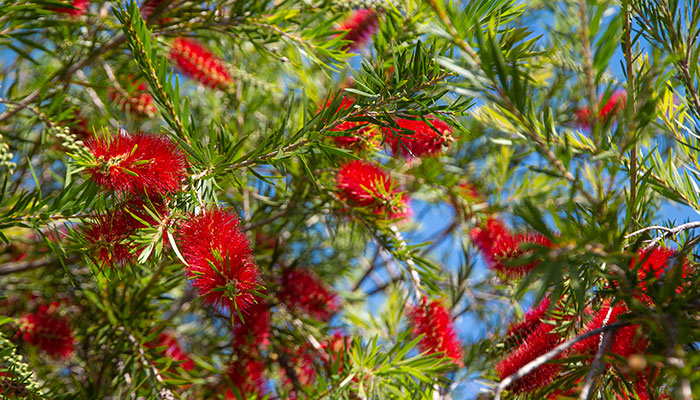Tree planting has started in an industrial area of Sydney's inner west to determine which species will be more resilient to climate change and assess how trees can help reduce local temperatures and particulate pollution.

New beginning: Ross Galletis of Madhouse Bakehouse digs in to plant the project's first tree in Strathfield's industrial precinct, with (from left) Steve Hartley of the DPIE, Strathfield Mayor Antoine Doueihi, Macquarie University's Alessandro Ossola, Deputy Mayor Karen Pensabene, Cr Maryanne Duggan and Smart Green Cities' Leigh Staas.
Sydney's inner west suburb of Strathfield was reported to be 'vulnerable' and significantly hotter than neighbouring suburbs, according to a 2017 national assessment of tree cover in 139 council areas. Just 10 per cent of the suburb has tree canopy, a third of the state average.
In response to the report, Strathfield City Council decided to make its industrial areas more pleasant and healthier places to work and live as part of an overall greening strategy that includes reducing pollution.
The council partnered with Macquarie University's Smart Green Cities to conduct a pilot project, the first of its kind in Australia. The joint team will plant 180 trees in an industrial study site identified as a good 'living laboratory' – an area with a transport interchange, smash repairers, waste disposal, recycling facilities, cement manufacture and food logistics.
With few trees, lots of grey infrastructure and high temperatures, it is a particularly harsh environment.
"We want to empower councils to plant more trees — trees that we will have determined survive best in harsh environments," says Leigh Staas, Associate Director of Smart Green Cities. "We are also hoping to identify which species perform better in improving air quality in their local areas."
The selected area is a known 'heat island' because of the enormous amount of hard infrastructure, roads and buildings, the concrete surfaces absorb and trap heat more than in surrounding areas with more trees.
"With few trees, lots of grey infrastructure and high temperatures, it is a particularly harsh environment," Staas says.
Hairy leaves catch pollution
Beginning after ANZAC Day, the council will plant half the trees in the designated industrial area and half in a parkland for comparison.

Put to the test: Species with hairy leaves, such as the crimson bottlebrush, have been chosen because they are expected to capture particulate matter.
Staas' team has identified 18 tree species, native and non-native, to see if they can survive and thrive in this environment and also collect particulate matter to reduce pollution. "These species all have significantly hairy leaves which are expected to capture particulate matter," she says. They include crimson bottlebrush, hickory wattle, silver birch and chinaberry.
Over the next 18 months, the researchers will then measure tree growth as well as which trees will collect particulate matter best in their living laboratory. Smart sensors will be deployed across the area to measure air quality and temperature changes over time.
This area seemed very raw and industrial in comparison. The tree planting project is going to have a real softening effect visually.
Strathfield City Council has developed a scorecard, asking local businesses to participate to determine how their perception of the trees and working in the industrial area changes over time, while local council members will have access to the data collected by smart sensors to see changes over time.
"We want to create a bit of ownership of the trees by the businesses, so they understand the value of trees and they can see the difference and benefits they make to their environment too," Staas says.
A more pleasant place to work
Ross Galettis, founder of Madhouse Bakehouse, a wholesale bakery company located in the industrial precinct catering for airlines, hotels, cafes and restaurants, is optimistic that the trees will make a positive difference, as well as reducing the dust and heat.
"We'd moved our premises from Marrickville which is still quite green and suburban," he says. "This area seemed very raw and industrial in comparison. The tree planting project is going to have a real softening effect visually. It'll make it much more pleasant for the truck drivers, our clients and also our workers who come here every day."
Using all the data collected, researchers plan to create best practice guidelines by June 2022 for councils across Australia to suggest how to transform industrial areas to engage the local community and measure the effectiveness of trees.
Staas points out that planting trees will have other benefits to industrial areas.
"It will improve their desirability, their livability and that should eventually also improve real estate prices in those areas too," she says.
Galettis suggests that trees should be planted in every industrial precinct across the country.
"The businesses that work here don't want to work in concrete jungles. I am going to love having tree-lined streets everywhere. I am very appreciative that we are the pilot project."
Leigh Staas is the Associate Director of Macquarie University's Centre Smart Green Cities.






